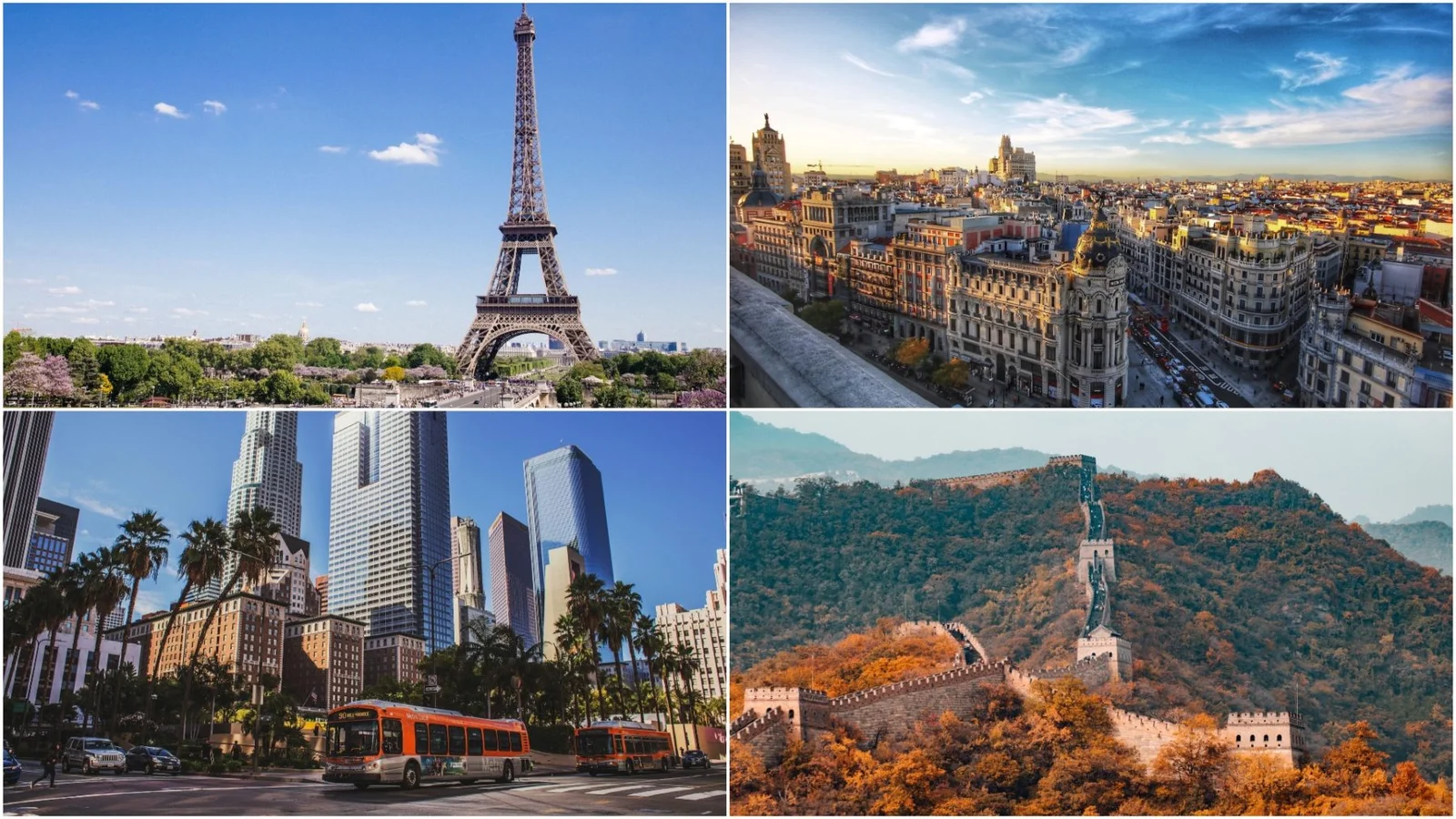If you are a trip enthusiast, then you must visit these top 5 countries. Algeria, Libya, Morocco, Mauritania and Tunisia)
If you’re a true trip enthusiast with a thirst for authentic experiences, history, and diverse landscapes, then visiting North Africa’s top five gems—Algeria, Libya, Morocco, Mauritania, and Tunisia—should be high on your list. These regions provide a unique combination of age-old societies, awe-inspiring desert views, and deep-rooted cultural practices. Algeria, the largest country in Africa, boasts the dramatic Saharan dunes and the stunning Roman ruins of Timgad and Djemila. Libya, though often overlooked, is home to some of the most well-preserved Greco-Roman sites in the world, such as Leptis Magna and Sabratha. Morocco dazzles with its colorful souks, imperial cities like Fez and Marrakech, and the surreal landscapes of the Atlas Mountains and the Sahara. Mauritania offers raw, untouched beauty—from the ancient trading city of Chinguetti to the hauntingly vast Adrar Plateau. Finally, Tunisia blends Mediterranean charm with deep-rooted history, featuring sites like Carthage and the amphitheater of El Djem, as well as pristine beaches. Together, these nations form a corridor of culture, mystery, and natural wonder—ideal for travelers who crave depth and discovery over superficial tourism.
- 1 – Algeria
Algeria is an extensive and fascinating country that links the Mediterranean shores of North Africa to the vast, enigmatic area of the Sahara Desert. As the largest country on the African continent, Algeria is characterized by its striking geographical diversity, deep historical roots, and rich cultural heritage that blends Arab, Amazigh (Berber), Islamic, and French influences. Politically a republic and economically driven by vast reserves of
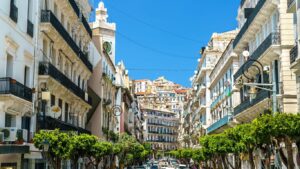
oil and natural gas, Algeria remains relatively untouched by mass tourism, offering a more authentic and immersive travel experience. Its landscapes range from the fertile Mitidja plains and forested Kabylie moun
tains to the surreal, golden sand seas of the central Sahara. Among Algeria’s most special places is Algiers, the capital, known for its Ottoman-era Casbah, French-colonial architecture, and stunning Mediterranean views. Meanwhile, Timgad and Djemal boast some of the most well-preserved Roman ruins found beyond Italy. This valley, designated as a UNESCO World Heritage Site, presents a remarkable Ibadi civilization that has thrived for hundreds of years. Deeper in the south, the Hoggar Mountains near Tamanrasset and the prehistoric rock art of Tassili n’Ajjer National Park reveal ancient Saharan history and breathtaking natural beauty. Algeria is not just a country—it is a living museum of civilizations, a crossroads of cultures, and a destination of extraordinary, often overlooked, wonder.
- 2 – Libya
Libya is a country of profound historical significance and stark natural beauty, located in the heart of North Africa, bordered by the Mediterranean Sea to the north and the vast Sahara Desert to the south. Despite recent political instability, Libya remains one of the most archaeologically rich nations in the region, with layers of history stretching from prehistoric times to the Phoenician, Greek, Roman, and Islamic civilizations. The country’s geography is dominated by arid desert landscapes, but its coastline—stretching over 1,700 kilometers—is line
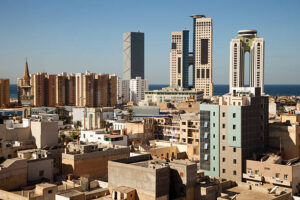
d with ancient ruins and untouched beaches. Among Libya’s most extraordinary places is Leptis Magna, one of the most spectacular and well-preserved Roman cities in the world, often described as “Rome away from Rome,” with its grand theater, basilica, and marketplace still largely intact. Sabratha, another UNESCO World Heritage Site, offers majestic ruins set against the backdrop of the sea. In the interior, Ghadames, known as the “Pearl of the Desert,” showcases a unique blend of Saharan architecture and Berber heritage, with its labyrinthine old town and whitewashed houses. The Acacus Mountains in the southwest contain prehistoric rock art dating back thousands of years, depicting ancient wildlife, human figures, and daily life long before the Sahara became a desert. Libya is a country where the desert holds echoes of ancient empires, where every ruin tells a story, and where history and heritage are etched into the very landscape—a hidden gem waiting to be rediscovered.
- 3 – Morocco
Morocco is a country of extraordinary cultural depth, striking geographical variety, and enduring historical legacy, making it one of the most captivating destinations in the Arab world and Africa as a whole. Positioned at the crossroads of Europe, Africa, and the Middle East, Morocco blends Amazigh (Berber), Arab, Andalusian, and French influences into a unique national identity that’s both modern and deeply rooted in tradition. Its terrain ranges from the golden dunes of the Sahara to the snow-capped Atlas Mountains, from Atlantic surf towns t
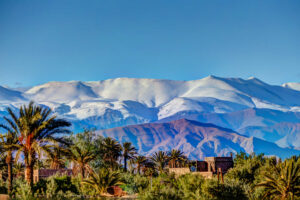
o fertile plains and imperial cities. Among Morocco’s most iconic destinations is Marrakech, famed for its labyrinthine
souks, vibrant Jemaa el-Fnaa square, and st
unning Moorish architecture. Fes, home to one of the world’s oldest universities, offers an immersive experience into medieval Islamic culture with its preserved medina and ancient tanneries. Chefchaouen, the “Blue City,” captivates visitors with its serene mountain setting and cobalt-washed streets. Casablanca, Morocco’s economic hub, features the monumental Hassan II Mosque, one of the largest in the world, while the coastal city of Essaouira offers a blend of Portuguese fortifications and laid-back coastal charm. In the southeast, the dramatic dunes of Merzouga introduce travelers to Saharan nomadic life. Morocco is not just a place to visit—it’s a world to enter, where ancient traditions meet contemporary creativity, and every city, mountain, and desert tells a story of resilience, beauty, and cultural fusion.
- 4 – Mauritania
Mauritania is a land of stark, haunting beauty and deep historical resonance, located at the meeting point of North and West Africa, where the sands of the Sahara blend into the Atlantic Ocean. Often overlooked, Mauritania is a country defined by its vast desert landscapes, ancient caravan routes, and rich Islamic heritage. It is a nation where nomadic traditions still endure and where time seems to slow under the endless Saharan sky. The country’s cultural heart lies in its ancient trading cities, particularly Chinguetti, a UNESCO World Heritage Site once known as the “City of Libraries,” which still houses centuries-old Qur’anic manuscripts and stands as a symbol
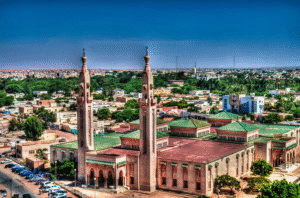
of Islamic scholarship. Another key site is Ouadane, a remote desert town with stone ruins that e
cho a once-thriving trans-Saharan trade center. In the far north, the Richat Structure, also known as the “Eye of the Sahara,” is a massive, mysterious geological formation visible from space, intriguing scientists and travelers alike. Along the coast, Banc d’Arguin National Park offers a stark contrast to the desert—a UNESCO-listed wetland sanctuary teeming with migratory birds and marine life. In the heart of the desert, the iron-ore train that stretches over 700 kilometers from Zouérat to Nouadhibou is one of the longest and most extreme rail journeys on This land offers an unparalleled and lasting impression of Mauritania’s grand scale and tough essence. Mauritania is not a country of spectacle but of silence, resilience, and ancient wisdom—an untouched frontier for those seeking depth, solitude, and authenticity.
- 5 – Tunisia
Tunisia is a country of remarkable historical depth, geographic diversity, and cultural richness, strategically nestled between the Mediterranean Sea and the Sahara Desert. As the northernmost country in Africa, Tunisia has served for millennia as a crossroads of civilizations—home to ancient Carthaginians, Romans, Byzantines, Arabs, and Ottomans—each leaving a lasting imprint on its identity. Modern Tunisia is a republic with a unique blend of Arab, Amazigh, and Mediterranean influences, where tradition coexists with progressive social and intellectual currents. The capital, Tunis, hosts the ancient ruins of Carthage, once Rome’s greatest rival, and the vibrant Medin
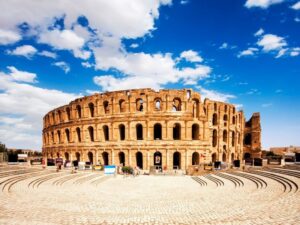
a of Tunis, a UNESCO World Heritage Site brimming with centuries-old mosques, palaces, and markets. To the south lies El Djem, home to
one of the world’s largest and best-preserved Roman amphitheaters, rivaling the Colosseum in grandeur. The charming village of Sidi Bou Said, renowned for its distinctive blue-and-white buildings overlooking the sea, provides a tranquil artistic atmosphere and coastal allure. Kairouan, one of Islam’s holiest cities, showcases stunning Islamic architecture and deep religious heritage. Farther inland, Matmata and the Ksour of Tataouine present surreal troglodyte dwellings and Berber granaries—settings that even inspired the landscapes of Star Wars. Tunisia’s Sahara region, particularly around Douz and Tozeur, unveils breathtaking oases, palm groves, and desert dunes, while the northern coast boasts Mediterranean beaches and ancient Punic ports. Tunisia is a nation where history lives in every stone, where cultures blend harmoniously, and where each corner reveals a different facet of Africa’s northern jewel.
